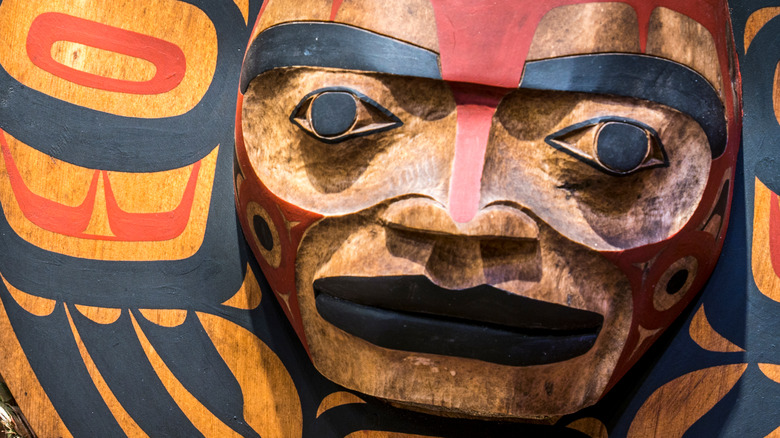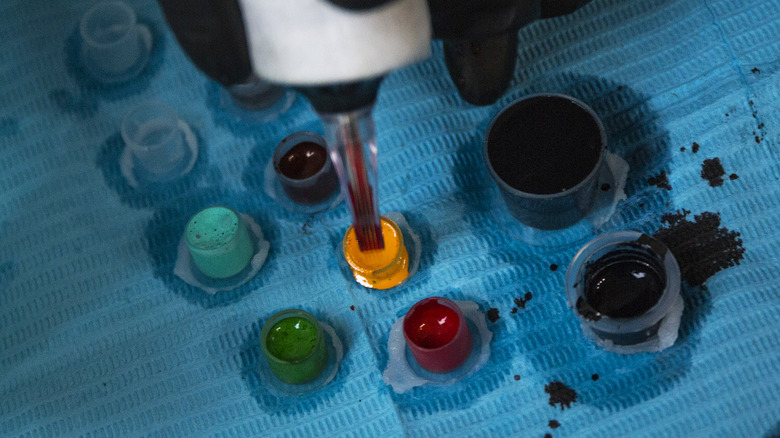The History Of Indigenous Facial Tattoos Explained
The word tattoo comes from the Marquesan and Tahitian languages, per Merriam Webster, but tattoos have adorned human skin all over the world for longer than history can record. Ötzi the Iceman had mysterious lines tattooed around his body. Ancient World notes that, according to the Greek historian Herodotus, Thracian noblemen sported tattoos as a way of displaying their love of war and danger; the peasantry, whose lived lives of unheroic drudgery, did not. The Athenian writer Xenophon saw people with intricate flower tattoos on his long march from Babylon to the Black Sea. The Greeks themselves forced tattoos on slaves.
In the pre-Columbian Americas, ritual tattooing was a common practice from Bolivia to Greenland. In a wide belt of North America, from Alaska to the Great Plains and Canada's Atlantic coast, people not only decorated their limbs and trunks — but also their faces. The designs and techniques are remarkably similar across this broad territory. Sapiens describes a few of them: lines down the chin, patterns of simple dots, geometric shapes, and sometimes the animal motifs familiar from Pacific Northwestern totem poles.
A new generation embraces tradition
This tradition almost went extinct in the late 19th and 20th centuries. Sapiens explains that the governments of the United States and Canada saw Indian customs, like tattooing, as a threat. Well into the 1970s, America's Bureau of Indian Affairs sent Native Alaskan children to miserable, often abusive boarding schools, to be metamorphosed from Indians to "Americans." The process was even more brutal in Canada, where thousands of First Nations children died in the "residential school system" (via Scientific American). Eventually, almost no one knew how to tattoo as their ancestors had; and as NPR alludes, almost no one wanted to.
In the 21st century, however, a new generation of indigenous women in Canada and Alaska have embraced traditional tattooing, drawing permanent lines down the chins and along the jawlines of their co-nationals. Primarily practiced by women, it's part of an explosion of creativity among the first generation of Indians not raised to view themselves as inferior. As one artist, Stacey Fayant, told the CBC, "People seem to know that they need this and it's for the right reasons ... They are coming to me specifically for a traditional tattoo that connects them to their identity and their culture."

